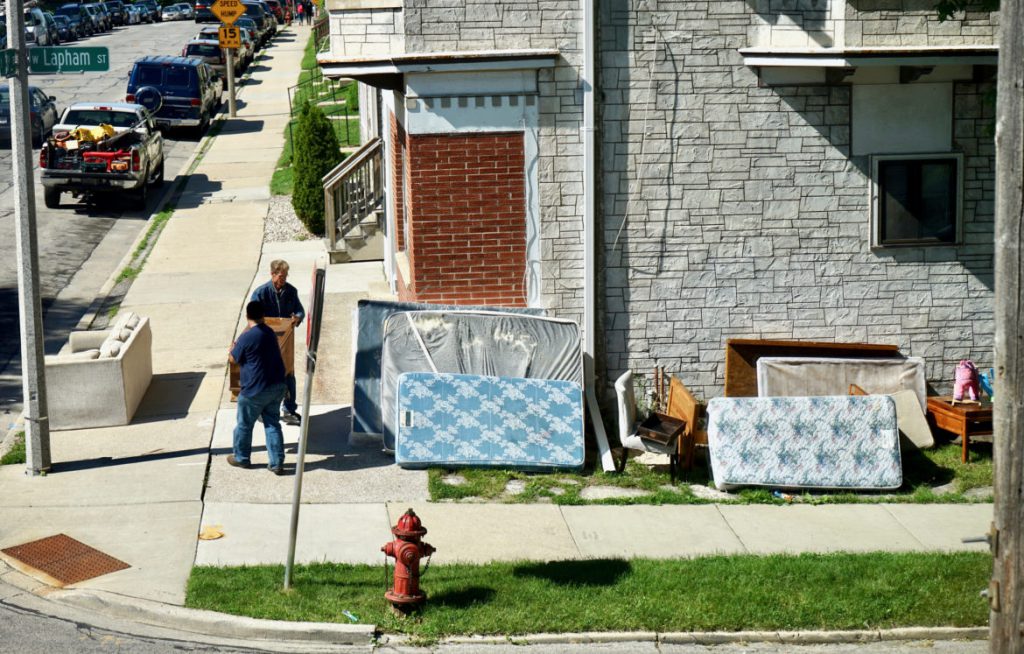City Steers $15 Million More to Help Renters
Funding from federal CARES Act will help meet surging demand for rental assistance payments.

The Social Development Commission and Community Advocates continue to work on helping struggling tenants with the Wisconsin Rental Assistance Program. File photo by Adam Carr/NNS.
As residents continue to struggle to meet payments, the City of Milwaukee is providing an additional $15 million for rental assistance aid through the federal CARES Act.
Steven Mahan, director of the city’s Community Development Grants Administration office, said the new funds will help the Social Development Commission meet surging demand for the Wisconsin Rental Assistance Program, or WRAP.
He said the funds will assist Milwaukee residents who have already applied for WRAP and then be used to help other applicants.
The Social Development Commission, or SDC, previously received $6.7 million to assist residents of Milwaukee, Ozaukee and Washington counties with rental assistance as part of CARES.
In addition, Community Advocates received $7 million in CARES funding to help Milwaukee County residents. CARES stands for the Coronavirus Aid, Relief, and Economic Security Act.
Both agencies have struggled to meet demand from residents. Last month, we wrote about how the SDC was working to pare down a backlog of 24,000 names. We also reported on efforts by Community Advocates, which was playing catch-up with 1,500 applicants.
As residents continue to face hardships in paying rent, we are checking in regularly with the SDC and Community Advocates on what’s happening with the Wisconsin Rental Assistance Program.
Social Development Commission
Kim Dawson-Brooks of the Social Development Commission said staffers at the agency have noticed that applicants are not filling out the necessary forms to complete the process.
“If everyone who has a pending application returns the necessary forms a majority of our applications would be depleted,” she said.
Eligible applicants must be an adult Milwaukee resident with a household income at or below 80 percent of the county median income, $65,000 for a household of four or $46,000 for a household of one, in the month of or before the application date. They must be able to prove they have a loss of income due to COVID-19.
WRAP can award up to $3,000 per household in a combination of rental payments and/or security deposits paid directly to the landlord.
But the process relies heavily on landlords writing on behalf of their tenants.
How to ace the application
In an earlier interview with NNS, Dawson-Brooks explained how applicants can make the process easier by following these steps:
1. Submit information through WRAP website as opposed to calling.
2. Work with your landlord and return requested information as quickly as possible.
3. Have information ready in advance. Applicants (adult Wisconsin residents) will be asked to provide the following information during the application process:
- Social Security numbers and birth dates for everyone in the household
- Current gas, electric or oil energy bill (or lease/letter from your landlord if heat is included in your rent)
- Monthly rental amount and total amount due
- Proof of all income sources for the entire household’s gross income for one month before the application month (child support, wages, pension, unemployment, etc.)
- Seasonal employees and self-employed persons will require the prior year’s entire tax package. Rental income must be verified by taxes and Schedule E.
Community Advocates
Since mid-June, Community Advocates have approved 350 households for rent assistance, totaling $500,000, according to Deborah Heffner, the housing strategy director at Community Advocates.
Another 1,500 completed applications are being reviewed and processed by case managers for final approval.
Other resources
Worried about being able to pay rent? Here are some resources that can help.
Do you want to talk to a reporter about your experience? Fill out this form.
Check out our Instagram Story on “Milwaukee resources to help you avoid evictions.”
Help is just a text away with the News414 project with our friends from Wisconsin Watch and Outlier Media. Text MILWAUKEE to 73224 to see how it works.
This story was originally published by Milwaukee Neighborhood News Service, where you can find other stories reporting on fifteen city neighborhoods in Milwaukee.





















